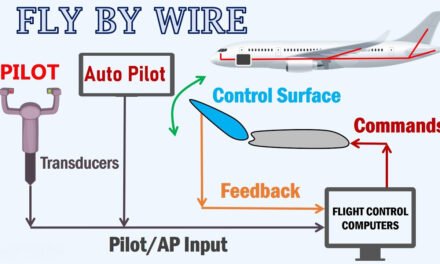Small satellites, particularly CubeSats, are transforming the space industry with their affordability, versatility, and rapid deployment capabilities. Emerging trends in CubeSat technology reflect advancements in miniaturization, enhanced functionality, and new applications. Here’s a comprehensive look at these trends:
1. Increasing Adoption of Small Satellite Constellations
- Trend:
- Deployment of large constellations of CubeSats for global coverage.
- Applications:
- Earth Observation:
- Real-time monitoring of environmental changes, urban development, and disaster response.
- Example: Planet Labs’ Dove satellites form one of the largest Earth observation constellations.
- Earth Observation:
2. Advanced Miniaturization and Component Integration
- Trend:
- Development of compact, lightweight, and integrated subsystems for CubeSats.
- Innovations:
- Miniature Sensors:
- High-resolution cameras, hyperspectral imagers, and advanced sensors in small packages.
- Integrated Systems-on-Chip (SoC):
- Combines processing, storage, and communication in a single, power-efficient chip.
- Miniaturized Propulsion:
- Micro-thrusters and electric propulsion systems enable precise orbit adjustments and maneuvers.
- Miniature Sensors:
3. Increased Use of Artificial Intelligence (AI) and Machine Learning (ML)
- Trend:
- AI and ML enable CubeSats to operate autonomously and process data onboard.
- Applications:
- Data Processing:
- Onboard analysis of images and sensor data reduces the need for high-bandwidth downlinks.
- Autonomous Decision-Making:
- CubeSats can prioritize observations or optimize power and thermal management based on mission needs.
- Collision Avoidance:
- AI-powered systems enhance real-time tracking and avoidance of orbital debris.
- Data Processing:
4. Development of Propulsion Systems
- Trend:
- Introduction of efficient propulsion technologies for small satellites.
- Key Technologies:
- Electric Propulsion:
- Ion or Hall-effect thrusters enable long-duration missions and precise maneuvers.
- Example: NanoAvionics’ CubeSat propulsion systems.
- Green Propellants:
- Safer, non-toxic alternatives to traditional fuels, like AF-M315E or water-based propellants.
- Solar Sails:
- Passive propulsion using sunlight to enable deep-space missions.
- Example: LightSail 2 demonstrated solar sail technology.
- Electric Propulsion:
5. Multi-Mission Capabilities
- Trend:
- CubeSats are being designed for multi-purpose missions, combining Earth observation, communication, and science.
- Examples:
- NASA’s Dellingr CubeSat supports simultaneous heliophysics and Earth science missions.
- Hybrid CubeSats provide both IoT connectivity and remote sensing capabilities.
6. Use of Advanced Materials
- Trend:
- Lightweight, radiation-hardened, and thermally efficient materials enhance CubeSat durability.
- Innovations:
- 3D-Printed Components:
- Cost-effective and customizable satellite structures and propulsion components.
- Radiation-Resistant Electronics:
- Protects CubeSat subsystems in harsh environments, enabling deep-space missions.
- 3D-Printed Components:
7. Enhanced Communication Technologies
- Trend:
- Adoption of high-speed, efficient communication systems for data transmission.
- Innovations:
- Laser Communication:
- Offers high data rates and low latency for inter-satellite and ground station links.
- Example: NASA’s TeraByte InfraRed Delivery (TBIRD) experiment.
- Software-Defined Radios (SDRs):
- Flexible communication systems that adapt to different frequencies and protocols.
- Inter-Satellite Links:
- Enables CubeSats to relay data among themselves, reducing dependence on ground stations.
- Laser Communication:
8. Modular and Scalable Designs
- Trend:
- CubeSats are increasingly built using modular components for faster customization and scalability.
- Advantages:
- Standardization:
- Facilitates rapid integration and testing.
- Scalability:
- Multiple CubeSat units can be combined to create larger, more capable spacecraft.
- Standardization:
9. Focus on Space Debris Mitigation
- Trend:
- Emphasis on responsible design and deorbiting mechanisms to reduce space debris.
- Technologies:
- Drag Sails:
- Deployable systems that increase atmospheric drag, accelerating deorbiting.
- Example: The RemoveDEBRIS mission demonstrated active debris removal and deorbiting.
- Propulsive Deorbiting:
- Small propulsion systems used to guide CubeSats to reentry after mission completion.
- Drag Sails:
10. Expansion into Deep-Space Missions
- Trend:
- CubeSats are now being used for interplanetary exploration.
- Examples:
- Mars Cube One (MarCO):
- Two CubeSats relayed data during NASA’s InSight Mars lander mission.
- Lunar CubeSats:
- CubeSats like Lunar IceCube and OMOTENASHI are part of NASA’s Artemis program to explore the Moon.
- Mars Cube One (MarCO):
- Challenges:
- Increased need for radiation shielding, advanced propulsion, and autonomous navigation systems.
11. Cost Reduction and Commercialization
- Trend:
- Lower launch and production costs have made CubeSats accessible to startups, universities, and emerging space nations.
- Drivers:
- Rideshare Programs:
- Launch providers like SpaceX and Rocket Lab offer cost-effective rideshare opportunities.
- Mass Production:
- Companies like Terran Orbital and Planet are adopting assembly-line techniques to mass-produce CubeSats.
- Rideshare Programs:
12. IoT and 5G Integration
- Trend:
- CubeSats are being integrated into global IoT networks and next-generation communication systems.
- Applications:
- Supporting smart agriculture, asset tracking, and remote industrial monitoring.
- Example:
- Swarm Technologies deploys CubeSats for global IoT connectivity.
Emerging trends in CubeSat technology highlight their growing importance across various domains, from Earth observation and communication to deep-space exploration. Advances in miniaturization, AI, propulsion, and modularity are driving their capabilities forward, making them a cost-effective and versatile solution for both commercial and scientific missions.













